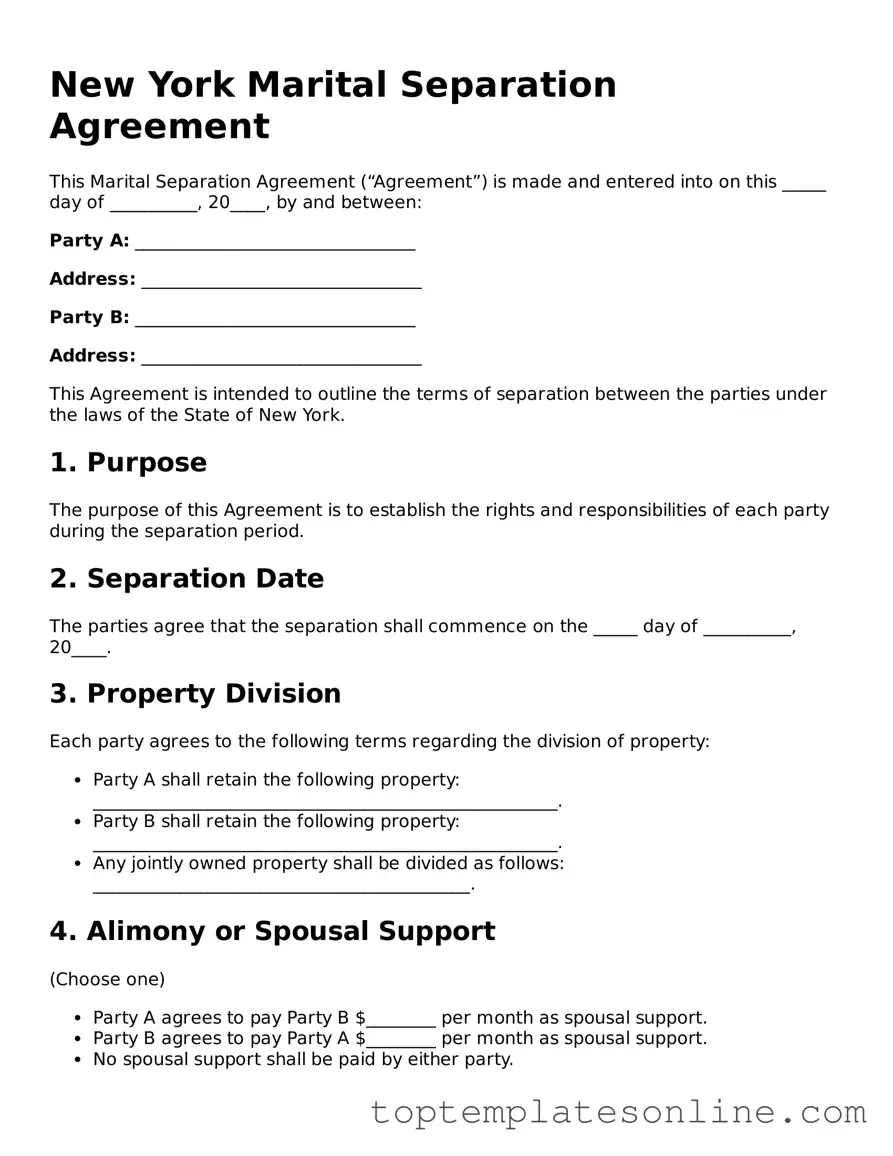Blank Marital Separation Agreement Template for New York State
A New York Marital Separation Agreement form is a legal document that outlines the terms of separation between spouses who wish to live apart while remaining legally married. This agreement addresses various issues such as property division, child custody, and financial responsibilities. By establishing clear terms, it helps both parties navigate the complexities of their separation with greater ease.
Customize Marital Separation Agreement Here
